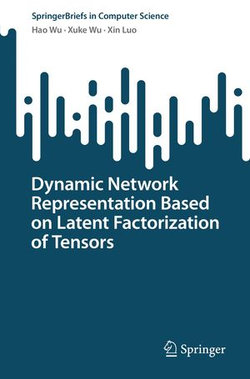
-
Books
-
Education
-
eBooks
-
Audio Books
-
Film & TV
-
Calendars, Diaries & Stationery
-
Giftshop

A dynamic network is frequently encountered in various real industrial applications, such as the Internet of Things. It is composed of numerous nodes and large-scale dynamic real-time interactions among them, where each node indicates a specified entity, each directed link indicates a real-time… more
A dynamic network is frequently encountered in various real industrial applications, such as the Internet of Things. It is composed of numerous nodes and large-scale dynamic real-time interactions among them, where each node indicates a specified entity, each directed link indicates a real-time interaction, and the strength of an interaction can be quantified as the weight of a link. As the involved nodes increase drastically, it becomes impossible to observe their full interactions at each time slot, making a resultant dynamic network High Dimensional and Incomplete (HDI). An HDI dynamic network with directed and weighted links, despite its HDI nature, contains rich knowledge regarding involved nodes’ various behavior patterns. Therefore, it is essential to study how to build efficient and effective representation learning models for acquiring useful knowledge.
In this book, we first model a dynamic network into an HDI tensor and present the basic latent factorization of tensors (LFT) model. Then, we propose four representative LFT-based network representation methods. The first method integrates the short-time bias, long-time bias and preprocessing bias to precisely represent the volatility of network data. The second method utilizes a proportion-al-integral-derivative controller to construct an adjusted instance error to achieve a higher convergence rate. The third method considers the non-negativity of fluctuating network data by constraining latent features to be non-negative and incorporating the extended linear bias. The fourth method adopts an alternating direction method of multipliers framework to build a learning model for implementing representation to dynamic networks with high preciseness and efficiency.
lessThis item is delivered digitally
Thanks for reviewing Dynamic Network Representation Based on Latent Factorization of Tensors. We will process your review. Accepted reviews will be posted within 3-7 business days.
Be the first to know, stay up to date with what's trending and get staff picks in your inbox with our newsletter


Public: Allow anyone to view or shop your List
Private: No one can view or shop your List
We have kept your A&R details for your new Angus & Robertson account
We also noticed that you have previously shopped at Bookworld. Would you like us to keep your Bookworld order history?
We also noticed that you have an account on Bookworld. Would you like us to keep your Bookworld details, including delivery addresses, order history and citizenship information?
Share This eBook